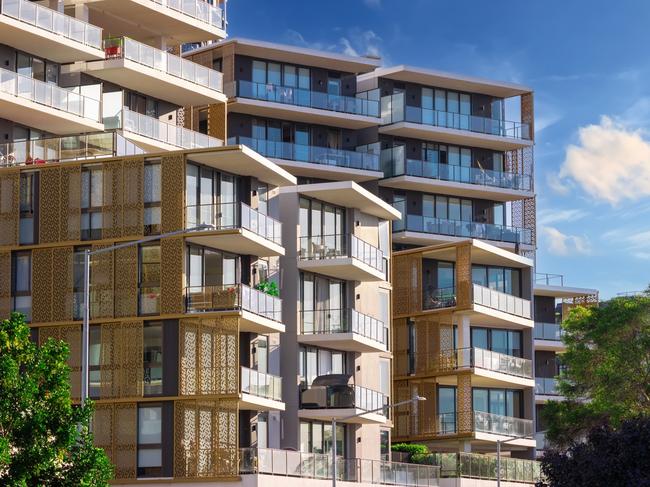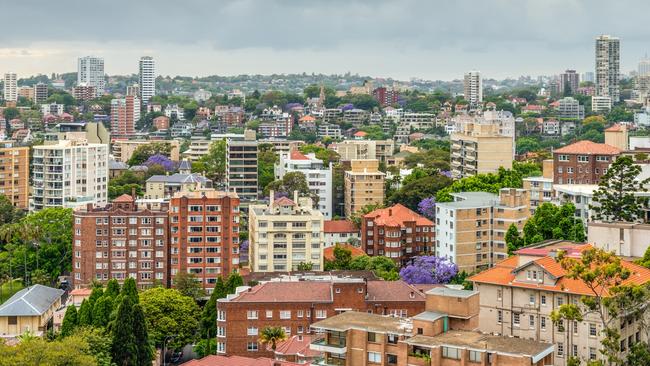Dire warning for Aussies in apartments
Australians who’ve tried to escape colossal house prices by living in an apartment face another looming disaster.
Economy
Don't miss out on the headlines from Economy. Followed categories will be added to My News.
ANALYSIS
The current crisis facing prospective first home buyers across our Great Southern Land is wildly different compared with any other time in modern history.
Over the past two years, Australians have witnessed the largest and fastest rise in mortgage rates in our nation’s history. As the average payable variable rate on an owner occupier mortgage rose from 2.9 per cent in April 2022 to 6.4 per cent today.
Meanwhile, the nation’s rental crisis has continued to go from bad to worse in aggregate, with the rental vacancy rate falling to record lows across multiple indices. Amid the most challenging rental conditions in decades, the number of non-home owners serious looking at buying a home has risen significantly compared to prior to the pandemic.
According to data from Digital Finance Analytics the proportion of non-homeowners seriously looking at getting into the market has risen by 7 per cent compared with prior to the pandemic.

Amid these challenging circumstances for prospective home buyers, purchasing an apartment or a unit has been a viable means of escaping the rental crisis for many, but it has also proven to be a strategy that comes with potential downsides of its own.
Defects
According to a report authored by the New South Wales government, of the 642 strata buildings that were covered by their research, 53 per cent had serious defects in the six years following their construction. 35 per cent of respondents stated their building had no serious defects and 12 per cent said they didn’t know.
The report defined serious defects relating to five building elements:
– Enclosure (and non-compliant cladding)
– Fire safety systems
– Key services
– Structure
– Waterproofing
The most common serious defect was waterproofing, impacting 42 per cent of buildings assessed, followed by fire safety systems with 24 per cent of structures afflicted.
Please note that the graph below adds up to more than 100 per cent due to some buildings being afflicted with multiple serious defects at the same time.
During a recent interview with the ABC, Sydney apartment buyer Patrick Quintal likened buying a new apartment or off the plan with Russian roulette. In Patrick’s case, serious structural and other defects require each impacted owner to pay upwards of $180,000 in order for them to be fixed.
With serious defects defined as structural impacting 15 per cent of buildings assessed by the New South Wales government, that is well and truly within the same ballpark of the 1 in 6 odds one has playing an explosive game of Russian roulette.
Getting what Australians want?
According to polling conducted for the Westpac Home Ownership Report, 14 to 16 per cent of buyers intend to purchase a unit or apartment depending on the demographic in question. While the proportion of prospective buyers intending to purchase a townhouse has risen significantly since the same survey was conducted in June 2021, across the board a large majority of respondents want to purchase freestanding houses.
For the 84 per cent or more of Australians who want a townhouse or a house, purchasing an apartment may represent a stepping stone to that a goal. A place to stop paying rent and start to build equity in order to start making progress up the metaphorical property ladder.
Rising fees
In mid-2023, the Owners Corporation Network of Australia (OCN) which represents owners in strata complexes, estimated that strata fees had risen by approximately 20 per cent in the last 12 months. OCN estimates that around 40 per cent of strata fees are a result of insurance premiums and excesses. With the ABS recording the highest level of inflation in insurance premiums in 23 years in the latest CPI figures (up by more than 16 per cent), strata fees appear set for yet another outsized rise in aggregate for the current financial year.
Concerningly, we don’t actually know for certain exactly how much strata fees have risen and what the median cost is, since up to date data on the subject is not available.

The Executive Director of OCN, Karen Stiles said: “Government’s are not measuring the ongoing cost to their citizens of their ‘higher density housing’ policies. When we talk affordable housing, that has to include the ongoing cost of living in the property.”
No easy answers
There is a commonly held perspective that purchasing an apartment is a way to get that first foot on the property ladder and that one will no longer be spending “dead money” on rent, and instead building equity.
For some Australians apartment life represents their desired lifestyle, for others it represents a stepping stone to the future home of their dreams. But this dream of apartment life or of purchasing an apartment to stop paying rent and to begin to ascend the property ladder has risks and potential downsides.
The proportion of new strata buildings in New South Wales with serious defects has risen from 39 per cent in 2021 to 53 per cent today and scarcely a week goes past without news of an outsized levy being imposed on apartment owners to pay for defects somewhere in the nation.
Out in the world of the rental market, hundreds of thousands of Australians are experiencing a housing based version of ‘The Hunger Games’. Where one really has to hope to be successful in obtaining a rental if they don’t have family and friends helping to provide alternative living arrangements to fall back on.
As more and more Australians end up in high density living arrangements whether they want to or not, addressing the issues of defects, rising ongoing costs and a lack of overall transparency in strata fees become all the more pressing.
Tarric Brooker is a freelance journalist and social commentator | @AvidCommentator
Originally published as Dire warning for Aussies in apartments





